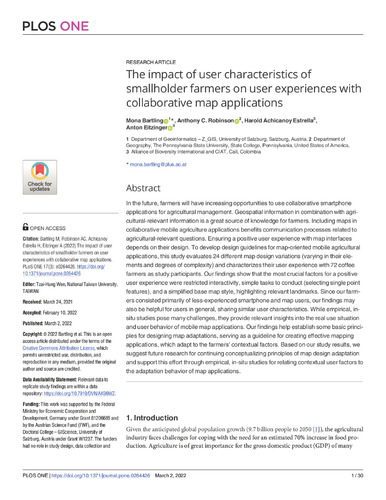The impact of user characteristics of smallholder farmers on user experiences with collaborative map applications
In the future, farmers will have increasing opportunities to use collaborative smartphone applications for agricultural management. Geospatial information in combination with agricultural-relevant information is a great source of knowledge for farmers. Including maps in collaborative mobile agriculture applications benefits communication processes related to agricultural-relevant questions. Ensuring a positive user experience with map interfaces depends on their design. To develop design guidelines for map-oriented mobile agricultural applications, this study evaluates 24 different map design variations (varying in their elements and degrees of complexity) and characterizes their user experience with 72 coffee farmers as study participants. Our findings show that the most crucial factors for a positive user experience were restricted interactivity, simple tasks to conduct (selecting single point features), and a simplified base map style, highlighting relevant landmarks. Since our farmers consisted primarily of less-experienced smartphone and map users, our findings may also be helpful for users in general, sharing similar user characteristics. While empirical, in-situ studies pose many challenges, they provide relevant insights into the real use situation and user behavior of mobile map applications. Our findings help establish some basic principles for designing map adaptations, serving as a guideline for creating effective mapping applications, which adapt to the farmers' contextual factors. Based on our study results, we suggest future research for continuing conceptualizing principles of map design adaptation and support this effort through empirical, in-situ studies for relating contextual user factors to the adaptation behavior of map applications.

